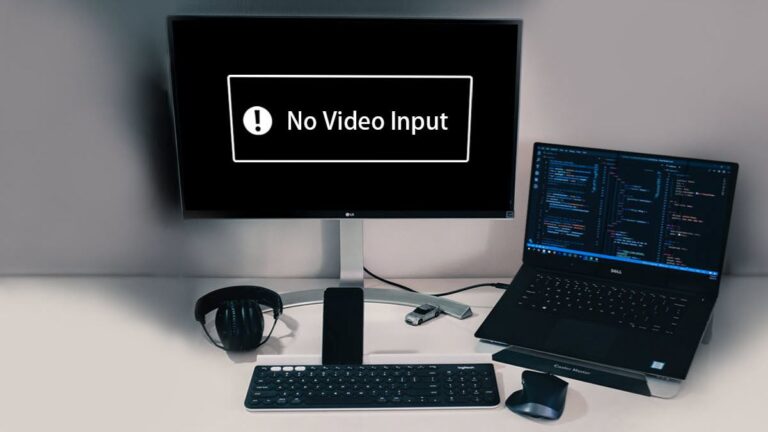Replication Monitor Not Showing Publication: Troubleshooting Solutions
If your Replication Monitor is not showing a publication that has already been added, you can resolve the issue by adding the publisher to the appropriate group in Replication Monitor. Additionally, you may need to reinitialize the subscription if necessary.

Credit: www.amazon.com
Replication Monitor Not Showing Publication
Start of the Introductory ParagraphReplication Monitor is a vital tool for monitoring and managing the replication process in SQL Server. However, there are instances where the Replication Monitor does not show a specific publication, causing concern for database administrators. In this blog post, we will explore the reasons why publications may not appear in the Replication Monitor and the importance of accurate monitoring to ensure smooth replication operations.
Start of the H3 Heading: Reasons for publications not appearingReasons For Publications Not Appearing
Start of the First Paragraph for ReasonsThere can be several reasons why a publication does not appear in the Replication Monitor. Let’s take a look at a few possible causes:
Start of Unordered List for Reasons- Publication Configuration: The first thing to check is whether the publication has been properly configured. It is crucial to ensure that the publication is set up correctly with the appropriate options selected.
- Permission Issues: It is possible that the user account used to connect to the Replication Monitor does not have the necessary permissions. Make sure that the account has the required permissions to access the publication details.
- Replication Agent Errors: Replication agents play a crucial role in the replication process. If there are any errors or issues with the replication agents, it can prevent the publication from appearing in the Replication Monitor.
- Network Connectivity Problems: Another possible reason for the publication not appearing in the Replication Monitor is network connectivity issues. If there are connectivity problems between the distributor and the publisher, the Replication Monitor may not be able to retrieve the publication information.
Importance Of Accurate Monitoring
Start of the First Paragraph for ImportanceAccurate monitoring of replication is crucial for maintaining the overall health and performance of a SQL Server environment. Here are a few reasons why accurate monitoring is of utmost importance:
Start of Unordered List for Importance- Early Detection of Issues: The Replication Monitor allows administrators to quickly identify any replication-related issues. By regularly monitoring the publication status, any problems can be detected early before they escalate into major issues.
- Timely Resolution: With accurate monitoring, administrators can promptly address any replication errors or failures. This ensures that the necessary steps are taken to resolve the issues swiftly, minimizing the impact on data availability and application performance.
- Performance Optimization: Accurate monitoring enables administrators to identify bottlenecks or performance issues in the replication process. By proactively addressing these issues, the overall replication performance can be optimized, leading to smoother data synchronization.
Assessing Publication Visibility
When managing replication in SQL Server, it is crucial to have complete visibility of all publications to ensure smooth functioning and troubleshooting. However, there are instances where the Replication Monitor fails to show a particular publication, causing confusion and hindering progress. In this section, we will discuss how to assess publication visibility in the Replication Monitor and troubleshoot any potential issues.
Confirming The Publication’s Existence
The first step in assessing publication visibility is to confirm whether the publication actually exists within the replication system. To do this, follow these steps:
- Open SQL Server Management Studio (SSMS) and connect to the appropriate instance.
- Expand the
Replicationfolder and navigate to theLocal Publicationstab. - Check if the publication in question is listed. If it is not present, it indicates that the publication might not have been created or has been removed.
If the publication is not listed, it is necessary to recreate the publication using the same publication name and against the same publication database. This will ensure that the publication is properly registered within the replication system.
Ensuring Correct Replication Monitor Configuration
Even if the publication exists, it may not show up in the Replication Monitor if the configuration is incorrect. To ensure correct Replication Monitor configuration, follow these steps:
- Launch Replication Monitor from SSMS.
- Click on the
Viewtab and selectPublishers. - Confirm that the desired publisher is listed. If it is not present, it might have been accidentally removed from the Replication Monitor.
- In case the publisher is missing, you can add it back by right-clicking on the
Publishersfolder and selectingAdd Publisher. Enter the necessary information to add the publisher back to the Replication Monitor. - If the publisher is already listed, verify that the appropriate group is selected in the left-hand pane. The publication might not show up if the wrong group is selected.
By confirming the existence of the publication and ensuring correct Replication Monitor configuration, you can effectively assess publication visibility and troubleshoot any issues. Following these steps will provide you with the necessary information to manage replication efficiently in SQL Server.
Verifying Replication Components
To troubleshoot the issue of Replication Monitor not showing the publication, you can try adding or removing publishers from the Replication Monitor in SQL Server Management Studio (SSMS). This can help refresh the grid and display the missing publication. Make sure to select the appropriate group under which the publishers should be listed.
When troubleshooting replication issues, it is crucial to verify the different replication components to ensure they are functioning correctly. This involves checking the distributor and subscriber health, as well as validating network connections and permissions. By performing these checks, you can identify potential problems and take necessary actions to resolve any issues that may be causing the Replication Monitor not to show the publication.
Checking Distributor And Subscriber Health
To check the health of the distributor and subscriber, follow these steps:
- Open the SQL Server Management Studio (SSMS) and connect to the distributor server.
- Expand the Replication folder, right-click on the Local Publications folder, and select Properties.
- In the Publications tab, ensure that the publication you are looking for is listed. If it is not listed, it may indicate an issue with the publisher or the publication itself.
- Next, click on the Subscriptions tab and verify that the subscriber is listed. If the subscriber is not listed, it may imply a problem with the subscriber configuration or connectivity.
Validating Network Connections And Permissions
To validate network connections and permissions, follow these steps:
- Check the network connectivity between the distributor and the subscriber by pinging the subscriber server from the distributor server, and vice versa. This ensures that there are no network-related issues hindering replication.
- Verify that the necessary firewall ports are open to allow the replication traffic between the distributor and the subscriber. The ports to check may vary depending on the specific replication configuration.
- Ensure that the SQL Server service accounts used by the distributor and the subscriber have the necessary permissions to access the required databases and perform replication operations. This includes permissions to create, read, and write to the necessary tables and objects involved in replication.
By following these steps to check the distributor and subscriber health, as well as validating network connections and permissions, you can diagnose and resolve issues that might be causing Replication Monitor not to show the publication. Taking a systematic approach to verifying these replication components will help ensure smooth replication operations and minimize any disruptions to your SQL Server environment.
Delving Into Sql Server Logs
When facing issues with Replication Monitor not showing a publication, one of the first places to investigate is the SQL Server logs. These logs contain valuable information that can help identify any errors or events that might be impacting the visibility of the publication. By delving into these logs, you can gain insights into the root cause of the problem and take appropriate actions to resolve it.
Investigating Error Messages And Event Viewer
One way to uncover potential issues is to carefully analyze the error messages present in the SQL Server logs. These error messages can provide clues about what might be causing Replication Monitor not to show the publication. Pay close attention to any error codes or specific error descriptions as they can guide you in troubleshooting the problem.
In addition to error messages, the Event Viewer is another helpful resource for investigating Replication Monitor issues. The Event Viewer provides a centralized location where you can view and manage events recorded by the operating system or applications. Look for any relevant events related to replication or the publication that can shed light on the problem.
Analyzing Sql Agent Jobs And Alerts
Another area to explore when Replication Monitor fails to display the publication is the SQL Agent jobs and alerts. SQL Agent jobs are responsible for performing various tasks in SQL Server, including replication-related operations. By analyzing these jobs, you can identify any failures or issues that might be hindering the visibility of the publication in Replication Monitor.
Similarly, alerts configured within SQL Server can be valuable in this troubleshooting process. These alerts can be set up to notify you when certain conditions are met, such as replication failures. By examining the alerts, you can gain insights into the health and status of replication and potentially uncover any problems that are impacting the publication’s visibility.
By delving into the SQL Server logs, investigating error messages and the Event Viewer, as well as analyzing SQL Agent jobs and alerts, you can effectively troubleshoot the issue of Replication Monitor not showing the publication. These steps will help you identify the root cause of the problem and take appropriate actions to restore visibility and ensure the smooth functioning of the replication process.
Reconfiguring Replication Settings
If you are experiencing the issue of Replication Monitor not showing a publication in SQL Server, one way to address this is by reconfiguring the replication settings. By following the steps outlined below, you can refresh the publication in the Replication Monitor or remove and re-add the publications:
Refreshing Publication In Replication Monitor
To refresh the publication in the Replication Monitor, follow these steps:
- Open the Replication Monitor in SQL Server Management Studio (SSMS).
- Locate the publication that is not showing up in the list.
- Right-click on the publication and select “Refresh” to update the status information.
By refreshing the publication, you can ensure that the Replication Monitor displays the most up-to-date information about the replication process.
Removing And Re-adding Publications
If refreshing the publication does not resolve the issue, you can try removing and re-adding the publications. This process involves removing the problematic publications and then re-creating them:
- Open SSMS and connect to the SQL Server instance where the replication is configured.
- Expand the “Replication” folder and navigate to the “Local Publications” folder.
- Right-click on the publication that is not showing up and select “Delete”. Confirm the deletion when prompted.
- Once the publication is deleted, right-click on the “Local Publications” folder and select “New Publication”. Follow the steps in the wizard to recreate the publication.
- After re-creating the publication, go back to the Replication Monitor and check if it now appears in the list.
Removing and re-adding publications can help resolve any configuration issues that may be causing the publication to not show up in the Replication Monitor.
By reconfiguring the replication settings through refreshing the publication or removing and re-adding publications, you can troubleshoot the issue of Replication Monitor not displaying the desired publication. Make sure to follow the steps carefully and check if the issue is resolved after reconfiguration.
Rectifying Replication Monitor Glitches
Replication Monitor is a powerful tool in SQL Server that allows you to monitor the status of your replication publications. However, sometimes you may encounter glitches where the Replication Monitor does not show your publication, causing confusion and frustration. In this section, we will discuss two effective methods to rectify these glitches: clearing incompatible settings and caches, and implementing fixes for identified issues.
Clearing Incompatible Settings And Caches
One common reason why a publication may not appear in the Replication Monitor is due to incompatible settings and caches. To resolve this issue, follow these steps:
- Open SQL Server Management Studio (SSMS) and connect to the publisher server.
- Navigate to the Replication Monitor.
- Right-click on the Replication Monitor and select “Properties”.
A window will open with various options. Here, we will focus on clearing incompatible settings and caches.
| Setting | Action |
|---|---|
| Incompatible settings | Review the settings and ensure they are compatible with the publication. |
| Caches | Clear the caches by selecting the “Clear All Caches” option. |
After clearing the incompatible settings and caches, close the properties window and check if the publication now appears in the Replication Monitor. If it does not, proceed to the next method.
Implementing Fixes For Identified Issues
If clearing incompatible settings and caches did not resolve the issue, it’s time to identify and fix any underlying issues. Follow these steps:
- Identify the issues: Analyze error messages, logs, and snapshots associated with the publication.
- Start log and snapshot activities: Right-click on the publication in the Replication Monitor and click the “Start” option for both log and snapshot activities.
- Monitor for temporary errors: Check if the error was temporary by monitoring the log and snapshot status.
- Fix identified issues: Based on the identified issues, take necessary actions to resolve them. This may involve troubleshooting connectivity problems, verifying replication records, and ensuring active connections to the Subscriber, Publisher, and Distributor.
By implementing these fixes, you can address any underlying issues that may be preventing your publication from appearing in the Replication Monitor. Once the issues are resolved, check the Replication Monitor again to ensure that the publication is now showing up.
Best Practices For Replication Stability
Replication is a crucial component of maintaining data consistency and availability in SQL Server environments. However, it is not uncommon to encounter issues, such as the Replication Monitor not showing publication information. In this blog post, we will discuss best practices to ensure replication stability, focusing on routine checks and maintenance plans, as well as strategies to prevent future visibility issues.
Routine Checks And Maintenance Plans
Regularly monitoring and performing maintenance tasks on your replication environment is essential for its stability. Here are some best practices to follow:
- Perform routine checks on the Replication Monitor: Regularly accessing the Replication Monitor will help you identify any potential issues or discrepancies. Ensure that the monitor is functioning properly, displaying the necessary information, and listing all the relevant publications.
- Create alerts and notifications: Set up alerts and notifications to promptly receive updates about any changes or problems in the replication environment. This proactive approach will allow you to address issues promptly before they escalate.
- Regularly check the replication agent status: Monitor the status and performance of replication agents, such as the Distribution Agent and the Merge Agent. Keep an eye out for any errors, slow processing, or agent failures.
- Monitor publication and subscription status: Regularly verify the status of publications and subscriptions. Ensure that publications are active, and subscriptions are properly synchronized. Take necessary actions if any publications or subscriptions are not functioning as expected.
- Optimize performance: Implement performance optimization techniques, such as indexing, query tuning, and workload analysis, to minimize replication latency and improve overall replication efficiency.
- Regularly review replication logs and error messages: Thoroughly examine replication logs and error messages to identify any recurrent issues or patterns. Analyze and address these issues promptly to minimize disruption to replication processes.
Strategies To Prevent Future Visibility Issues
To prevent future visibility issues, consider implementing the following strategies:
- Regularly update SQL Server versions and patches: Keeping your SQL Server instances up-to-date with the latest versions and patches can help prevent known replication issues and improve overall stability.
- Verify replication permissions: Ensure that the necessary permissions are granted to replication-related user accounts and roles. Inadequate permissions can lead to visibility issues in the Replication Monitor.
- Perform regular database maintenance: Conduct routine database maintenance tasks, including index rebuilds, statistics updates, and integrity checks. These maintenance activities can help improve replication performance and prevent visibility issues.
- Implement proper security measures: Secure your replication environment by implementing firewalls, proper authentication, and encryption mechanisms. Protecting your replication infrastructure can prevent unauthorized access and potential visibility issues.
- Regularly test replication processes: Periodically test the replication processes by performing test publications and subscriptions. This testing can help identify any anomalies or potential visibility issues before they impact the production environment.
By following these best practices for replication stability, you can improve the overall reliability and performance of your replication environment, while ensuring that the Replication Monitor accurately displays all necessary publication information.
Frequently Asked Questions Of Replication Monitor Not Showing Publication
How Do I Add Publisher To Replication Monitor?
To add a Publisher to the replication monitor, follow these steps: 1. Open the replication monitor in SQL Server Management Studio (SSMS). 2. Select the group under which the Publisher should be added. 3. Right-click on the group and choose “Add Publisher” from the options.
4. Provide the necessary information, such as the server name and database details, for the Publisher. 5. Click on “OK” to add the Publisher to the replication monitor.
How Do I Reinitialize A Replication Monitor Subscription?
To reinitialize a replication monitor subscription, follow these steps: 1. In Replication Monitor, expand the Publisher group. 2. Expand the Publisher and click on the desired publication. 3. Navigate to the All Subscriptions tab. 4. Right-click on the subscription you want to reinitialize.
5. Click on Reinitialize Subscription.
How Do I Know If Sql Replication Is Working?
To verify if SQL replication is working: 1. Open Replication Monitor. 2. Expand the Publisher group in the left pane. 3. Expand the Publisher and click on the publication. 4. Check the status of the subscriptions under the “All Subscriptions” tab.
5. Verify that records are being replicated and connections to the Subscriber, Publisher, and Distributor are active.
How Do You Refresh Replication?
To refresh replication, follow these steps: 1. Add or remove Publishers in Replication Monitor (SSMS). 2. Right-click on “Replication” and select “Distributor properties”. 3. Navigate to the “publishers” page and check if the Publisher appears. 4. If the Publisher is not visible, create the publication again with the same name and against the same DB, then remove it.
5. Verify that records are being replicated to the destination and that connections to the Subscriber, Publisher, and Distributor are active.
Conclusion
To ensure that your SQL replication is working properly, it is important to address issues with the Replication Monitor not showing the publication. Although it can be frustrating, there are several troubleshooting steps you can take to resolve this problem.
Check the log and snapshot status of the publication, verify that the connections to the Subscriber, Publisher, and Distributor are still active, and reinitialize the subscription if necessary. By following these steps, you can ensure that your SQL replication is running smoothly and effectively.





